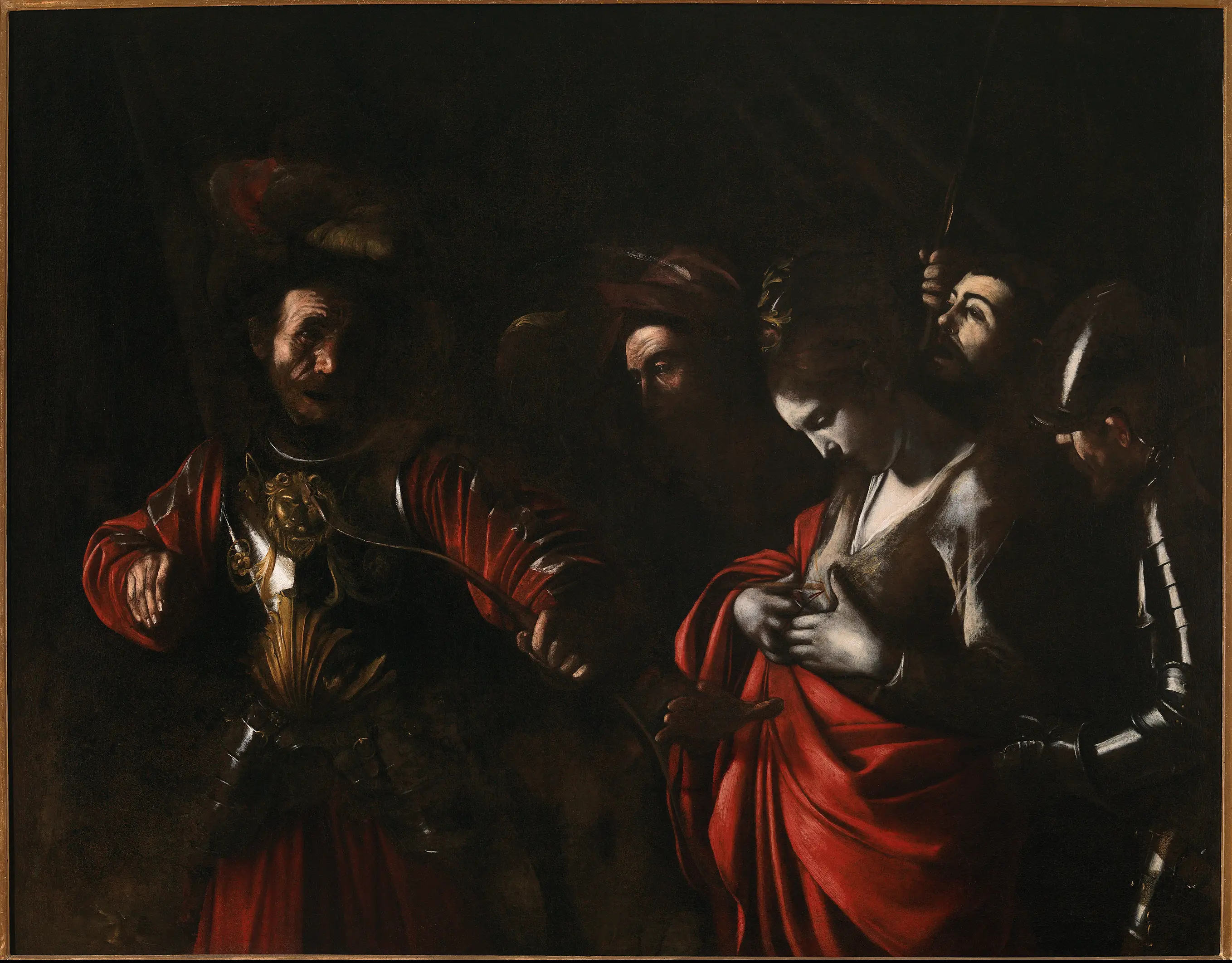“The Martyrdom of Saint Ursula” at National Gallery
Intesa Sanpaolo has loaned the great artist’s final work – the most important piece in its collection – to the National Gallery in exchange for two early paintings by Velázquez.
25/06/2024
Michele Coppola, Executive Director Art, Culture and Heritage, Intesa Sanpaolo and General Director Gallerie d'Italia
The National Gallery in London has launched its bicentenary celebrations with The Last Caravaggio, a new exhibition devoted to the Baroque master's final picture.
Widely acknowledged as a masterpiece, The Martyrdom of Saint Ursula is on loan from the collection of Intesa Sanpaolo, Italy’s biggest bank. A tightly cropped, claustrophobic composition with pronounced chiaroscuro (interplay of shadow and light), it depicts a key moment in the medieval legend of Ursula, a Christian princess from Britain.
Ursula is said to have led a pilgrimage of 11,000 virgins to Rome and, on her return, been murdered by the leader of horde of pagan Huns after refusing to marry him. Caravaggio captures her looking passively down at her breast, which the Hun’s fatal arrow has pierced from close range.
“This painting is deeply moving and tragic in tone,” says Gabriele Finaldi, the Director of the National Gallery. “It seems to reflect the artist's travail, his troubled state of mind and deep anxiety as he prepared to leave Naples and return to Rome.”
The Martyrdom of Saint Ursula in Naples as an autobiographical premonition
To explain: Caravaggio painted The Martyrdom of Saint Ursula in Naples in May 1610. At the time, he had been on the run for four years, facing a death sentence in Rome for having murdered a rival, Ranuccio Tomassoni, in a swordfight. His flight had taken him to Naples, Malta and Sicily, then back to Naples again. The artist’s final painting was dispatched from that city to its commissioner – the Genoese nobleman Marcantonio Doria – on 27 May.
At around that time, he heard from friends that a papal pardon was in the offing for Tomassoni’s murder. In early July, he duly set out by boat for Rome – only to fall ill under the blazing summer sun. According to biographer Giovanni Pietro Bellori, Caravaggio “was seized by a malignant fever that killed him in a few days” in the coastal town of Porto Ercole on 18 July. He was 38.
An autobiographical reading of The Martyrdom might see Ursula’s demise as a premonition on the artist’s part of his own. That said, with a look on his face combining fury and regret, the Hun chief perhaps reflects the range of emotions Caravaggio felt after killing Tomassoni.
Three other figures make up the scene: on the far right, an armoured soldier who lays a hand on Ursula’s arm; a man behind the princess (with a face remarkably like Caravaggio’s own) who cranes his neck, trying to get a better view; and another man, who thrusts a hand between the archer and his target, too late to intervene.

Caravaggio, The Martyrdom of Saint Ursula, 1610
Caravaggio paintings from Gallerie d'Italia
Ursula’s story had long been popular with artists. However, the episode most commonly depicted was the Huns’ massacre of her 11,000 companions, a crowd scene in broad daylight. Caravaggio, by contrast, homes in on an intense, single moment of violence in near-darkness, in a manner recalling that of a film director. (Martin Scorsese, incidentally, is an avowed fan of the artist and cites him as an influence for movies such as Mean Streets and Taxi Driver.)
The Last Caravaggio is a single-room show. It features two paintings: The Martyrdom of Saint Ursula alongside another work from late in Caravaggio’s career, Salome Receives the Head of John the Baptist (1609-10). The latter is owned by the National Gallery.
The Ursula picture usually resides in Gallerie d’Italia – Napoli, the museum run by Intesa Sanpaolo in Naples. This is an apt home, given that the canvas was painted in the same city four centuries ago. Indeed, the street on which the museum is located, Via Toledo, is a historic thoroughfare Caravaggio would have known well.
Caravaggio on Loan: exchange with Velázquez from the National Gallery
“This is the most important of the 35,000 artworks in the bank's collection,” says Michele Coppola, Executive Director Art, Culture and Heritage, Intesa Sanpaolo and General Director Gallerie d'Italia. “For us, it is a great pleasure to bring The Martyrdom of Saint Ursula to London.
“The decision of the National Gallery to celebrate its bicentenary with [our] Caravaggio is clear testimony of the commitment and recognition of Intesa Sanpaolo as a major cultural player – not only in Italy but internationally.”
In the spirit of reciprocity, the Gallerie d'Italia – Napoli has received on loan from the National Gallery two early paintings by Diego Velázquez. Immaculate Conception and Saint John the Evangelist on the Island of Patmos will be shown in the room where The Martyrdom is normally on view.
“At Intesa Sanpaolo, we believe society can be improved through cultural enrichment alongside economic enrichment,” says Coppola, “and we’re proud to be part of this exchange involving two of art’s great masters.”
The Last Caravaggio is at the National Gallery in London until 21 July 2024.

